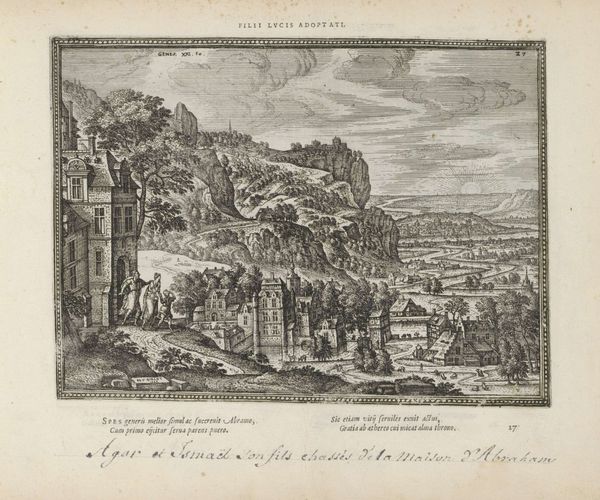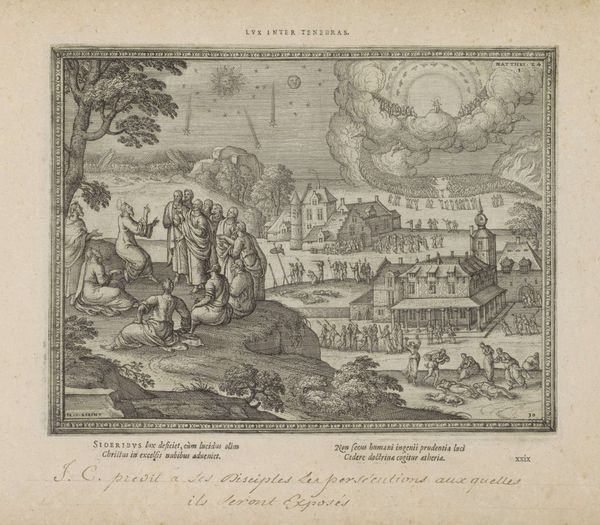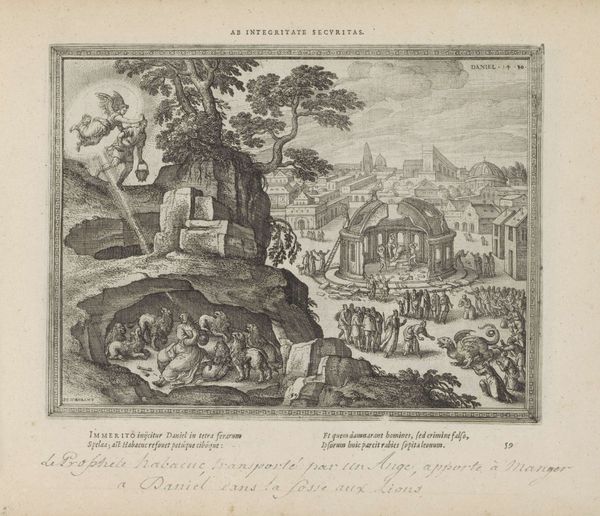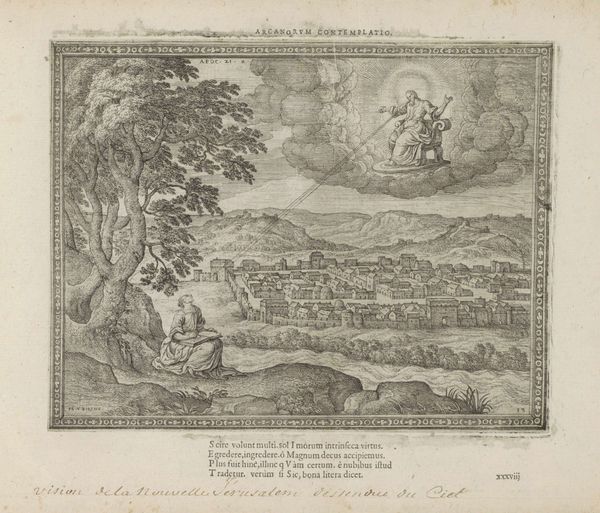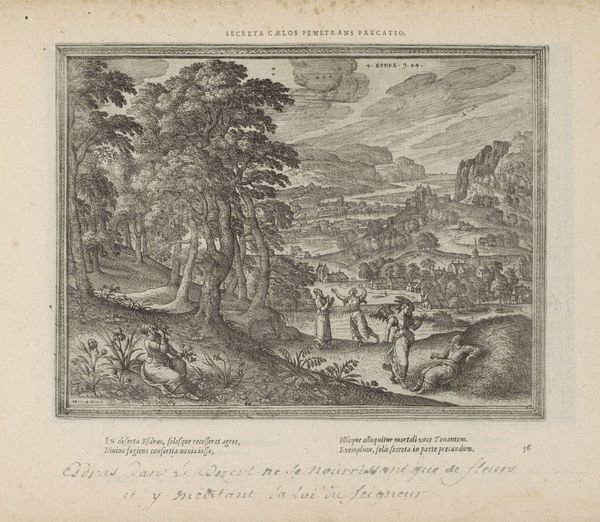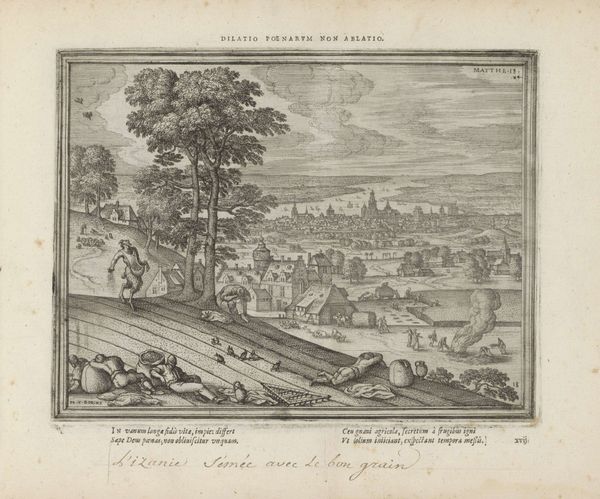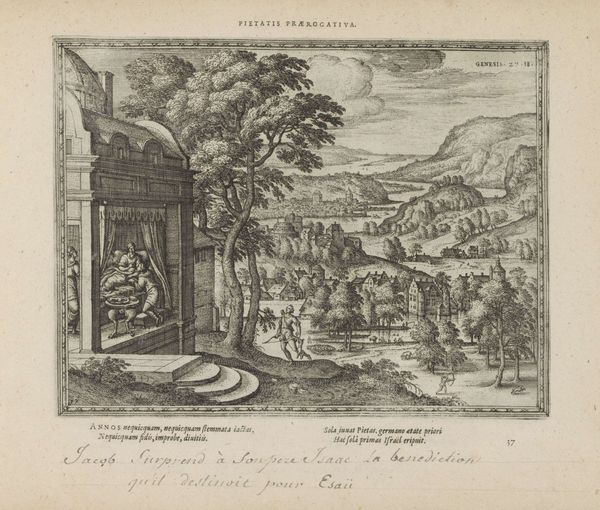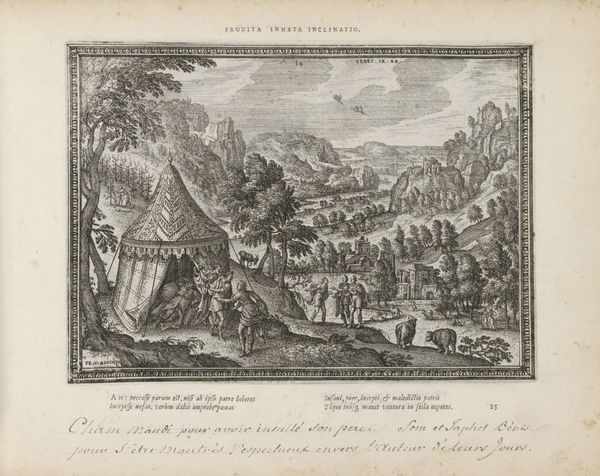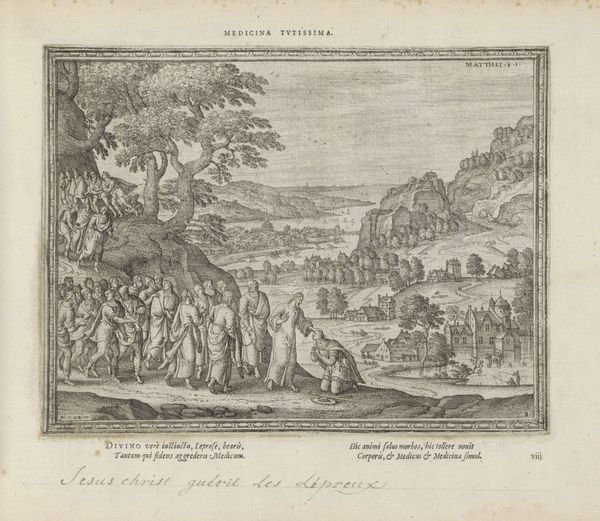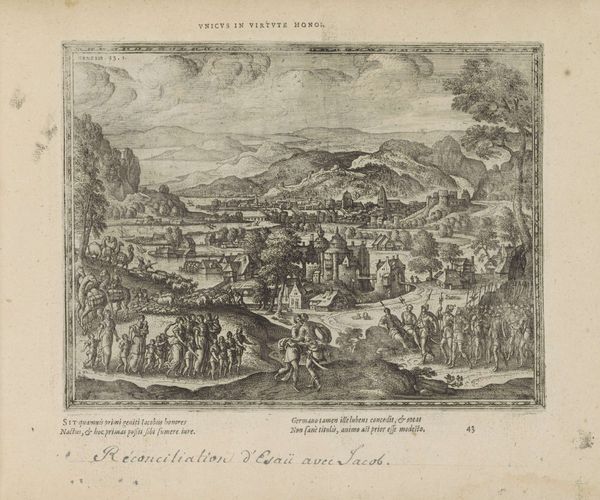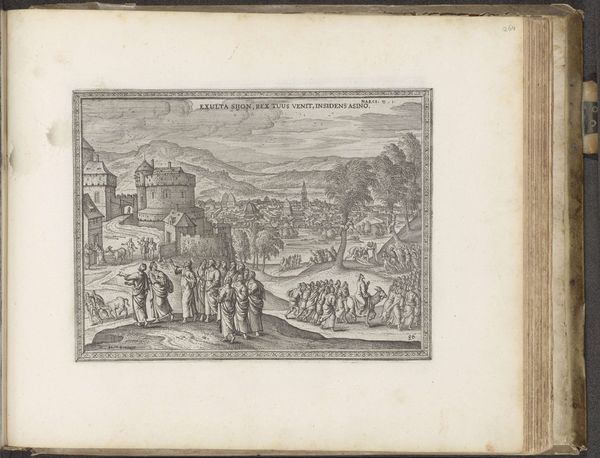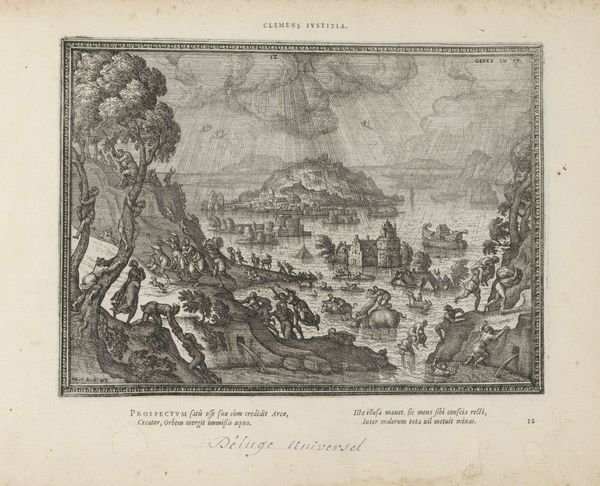
Jozua stuurt spionnen naar Jericho / Rachab laat de spionnen door het raam ontsnappen 1582 - 1613
0:00
0:00
pietervanderiborcht
Rijksmuseum
print, engraving
#
narrative-art
# print
#
old engraving style
#
landscape
#
history-painting
#
northern-renaissance
#
engraving
Dimensions: height 185 mm, width 258 mm
Copyright: Rijks Museum: Open Domain
Editor: Here we have Pieter van der Borcht the Elder’s engraving, "Joshua Sends Spies to Jericho/Rahab Lets the Spies Escape Through the Window," created sometime between 1582 and 1613. It depicts a rather dynamic scene, with figures spilling across the landscape, yet there's a real stillness to the engraving itself. What historical context helps to bring this scene to life for us? Curator: It’s fascinating how van der Borcht combines this bustling activity with that stillness you mentioned. Prints like this served a vital function beyond their aesthetic value. They disseminated biblical stories, shaping public understanding and morality within a rapidly changing social landscape during the Northern Renaissance. Consider where this print might have been displayed - a home, a workshop perhaps. How would that setting affect its interpretation? Editor: I imagine it being a readily available image in people's homes, potentially influencing their perspectives and reinforcing moral lessons in an accessible way. Curator: Precisely! Now, let's consider Rahab’s portrayal. What does her assistance to the spies, an act of betrayal against her own people, suggest about the social attitudes toward loyalty, faith, and even perhaps, gender roles, at the time this was made? Editor: I suppose it reflects a potential re-evaluation of loyalty, prioritizing religious faith over civic duty, and also the acknowledgment of a woman's agency, even if it exists within limited parameters. Curator: Exactly. And the artist presents a detailed cityscape. Think about how depicting Jericho in this way allows the public to connect biblical narratives with their contemporary understanding of urban space and societal structures. Do you think this adds a sense of realism to the religious story? Editor: It absolutely does. By depicting Jericho in a manner that reflects familiar cityscapes, the engraving bridges the gap between the biblical narrative and the viewer's lived experience. It highlights how powerful these visuals could be in shaping religious and political thought. Thanks for shedding light on its cultural importance! Curator: And thank you for seeing beyond the surface to its context! I'll never look at it the same way again.
Comments
No comments
Be the first to comment and join the conversation on the ultimate creative platform.

